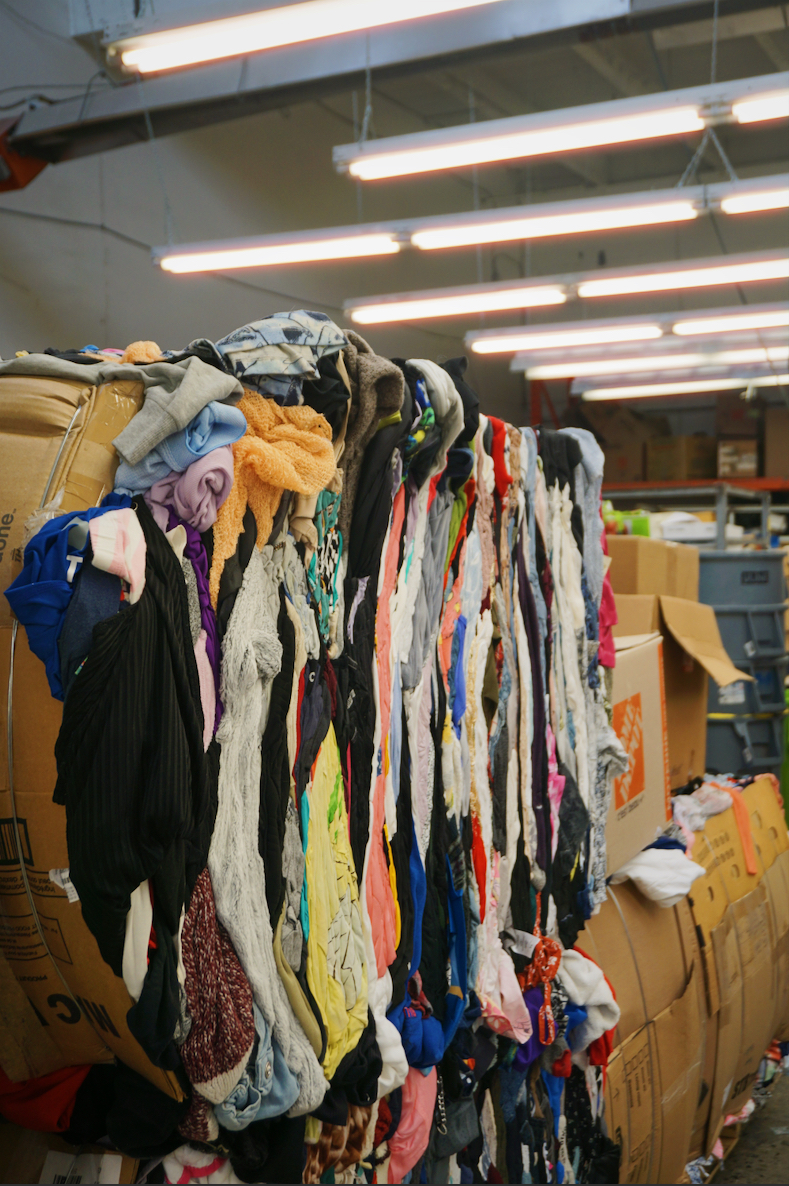Keira Emes, Oct 19, 2025 – 558 words
Do you really need another pair of blue jeans? Another pair of shoes? What about a couple more going-out tops? How did our mothers and grandmothers stay on trend without prime 2-day shipping! The truth is, we are buying more clothes each year than ever before, and we are wearing them less. But the cost of this consumption is not just our overflowing closets, there is a serious tangible impact from fashion on the environment.

“Funky styles” Here, Kealani sports a funky wig. Fun and unique items like this are plenty at the second-hand store and can be a perfect solution for building a unique style or fitting a niche fashion need, such as a halloween costume, while avoiding the unnecessary waste that comes from garments being purchased, worn once, and then discarded. October 25, 2025. Keira Emes
Social media apps such as Tik Tok and Instagram are fueling an insatiable hunger amongst younger generations to stay relevant and on trend, says Johnson. As everyday people spend more of their lives on screen, the struggle to constantly update a carefully crafted image can feel inescapable.
Johnson also explains how fast fashion brands such as Zara and H&M have existed for a while, usually taking about a month to research new trends, develop products, and get new items on shelves for consumers to enjoy. But with the advent of ultra-fast fashion producers such as Shein and Temu, this turnaround is closer to a week, with Shein uploading over 7,000 new products to their website every day. This rapid increase in supply necessitates a subsequent increase in demand and the speeding up of already quick trend-cycles. Fast fashion players such as Shein, depend on consumers to act on their whims to buy new clothes, by bombarding consumers with the constant introduction of new and exciting products, advertisements, and low prices; these producers are actually increasing consumers’ propensity to buy new products, says Colasante and colleagues.
Here are some of the facts about fashion consumption:
- The fashion industry makes up roughly 10% of global emissions (Li et al., 2024)
- The fashion industry is estimated to hit close to 3 Billion tonnes of greenhouse gas emissions by 2030; about half of which can be linked back to fast fashion (Li et al., 2024)
- Around 25% of newly made garments never even make their way to a consumer, remaining unsold, unworn, and ending up in landfills (David Suzuki Foundation, n.d.)
- People are shopping for new clothes more than ever before (Johnson, 2025)
- But! There are eco-friendly alternatives!

“Off to the rag house!” So many clothes donated to thrift stores sit on the racks and go unsold. This clothing is sent off to rag houses whereas the name suggests the fabrics can be turned into rags to be utilized in industrial settings or sold again to clothing resellers in hope of giving the garments a second, third, or tenth chance. Otherwise, these textiles may still end up in landfills. October 25, 2025. Keira Emes
Can second-hand be just as good?
Lauren Mullen and Kate Huun from the University of Colorado Boulder say that options such as thrifting can be good alternatives to shopping fast fashion. And that often the benefits of shopping second hand can extend beyond decreasing your environmental footprint saying that “You can save money by purchasing secondhand clothing. Thrift stores often have much lower prices than buying new items” and “Thrifting offers a wide variety of clothing types and styles to help you develop a unique and functional wardrobe.”

“Walking through the aisles” Kealani guides me through the second-hand store wearing a real-fur jacket that she found that day. Listed for $30, this jacket displays the affordability of shopping second hand as compared to new. October 25, 2025. Keira Emes
So, when the cost of shopping trends fast could be a massive contribution to the global emissions that are degrading ecosystems across the world, and the benefit to shopping second hand is more unique styles for a fraction of the price, that are better for our planet, it makes sense to invest a little more time, and to be a little more picky with the pieces we choose to add to our closet. In my next story, we will dive into how some people are able to still prioritize personal style and self expression while being a little kinder to the planet we call home.